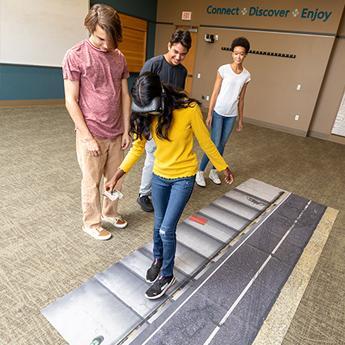Use these suggestions for connecting with your community-based audience.
 Drunk driving is a significant issue in many communities, causing devastating accidents and more than 11,000 fatalities in the United States in 2020 alone. As a community educator, you have a unique opportunity to help prevent drunk driving by educating people about the risks and consequences of getting behind the wheel while intoxicated.
Drunk driving is a significant issue in many communities, causing devastating accidents and more than 11,000 fatalities in the United States in 2020 alone. As a community educator, you have a unique opportunity to help prevent drunk driving by educating people about the risks and consequences of getting behind the wheel while intoxicated.
If you’re new to community education or are looking to revamp your current program, try out one of these tips for effective drunk driving prevention education:
- Draw from your background
- Tailor the lessons to your audience
- Request participant feedback
- Incorporate hands-on activities
Let’s break down each of these drunk driving prevention tips for your community education program below!
Draw from your background
As a community educator, you have the option to draw from your own experiences when teaching others about the dangers of drunk driving. Perhaps you work in law enforcement or for the local fire department — in that case, you can address the issue based on the things you’ve seen firsthand and help inform participants about local laws.
Even if you’re a community educator without law or safety experience, you can still teach others about drunk driving prevention and weave in stories on how drunk driving has affected your family, friends, and community.
Tailor the lessons to your audience
Just like your lessons can change depending on your personal background, they should also be created with the lived experiences of your audience in mind. For example, if your participants are primarily teenagers or new drivers, you’ll want to make sure you’re using a tone that’s engaging without being condescending and draw from stories from their peers whenever possible. For college-aged participants or other adults in your community, incorporate solutions to avoid drunk driving and even drinking in general (rideshares, public transportation, dry events, etc.).
Request participant feedback
The best feedback you’ll get on your drunk driving prevention program will be from the people actually sitting in on your lessons. You can check in with participants at the start of the program to see what they’d like to learn, part way through the course to make sure your lessons are still holding their attention, and at the end to get their final thoughts.
If your program is just one session instead of a multi-week course, consider sending participants a link to a survey afterward and use their feedback to help inform your future events.
Incorporate hands-on activities
No matter the setting of your program or the age of the students you’re sharing drunk driving prevention tips with, one thing is certain: if you want your lessons to make an impact, you need to hold participants’ attention.
One surefire way to do that is with hands-on, engaging tools and activities like the ones from Fatal Vision. The Fatal Vision® Alcohol Impairment Goggles, used in tandem with activities like those found in the Community Event Pack, help make your lessons more memorable and are a fun way to get everyone involved with learning. You can also utilize teaching tools like DIES® Alcohol Activity Mats and intoxiclock® Pro.
For more information about interactive tools you can add to your community-based drunk driving prevention program, check out these FAQs about our alcohol impairment goggles, or these things to know about our drug and alcohol education products.
To browse all of our drunk driving prevention tools and learn which ones are the best fit for your program, visit our online store or contact our team today.




 Drunk driving is a significant issue in many communities, causing devastating accidents and
Drunk driving is a significant issue in many communities, causing devastating accidents and 